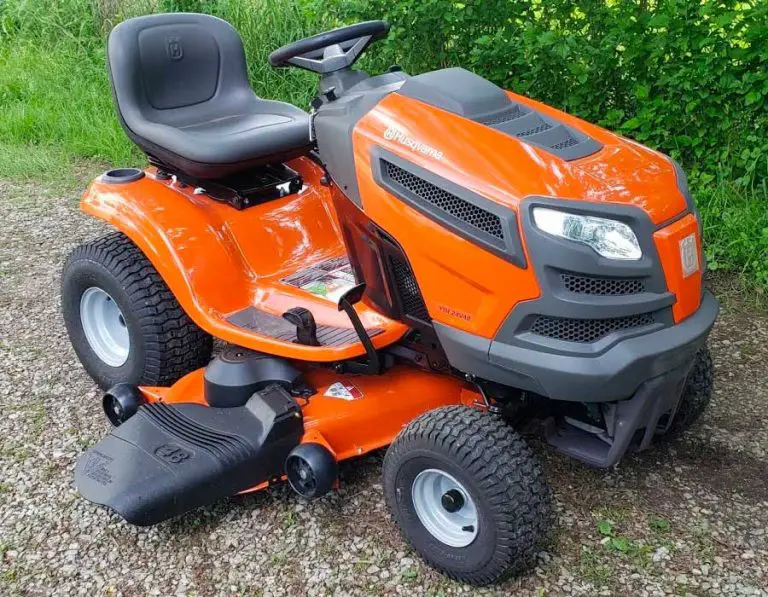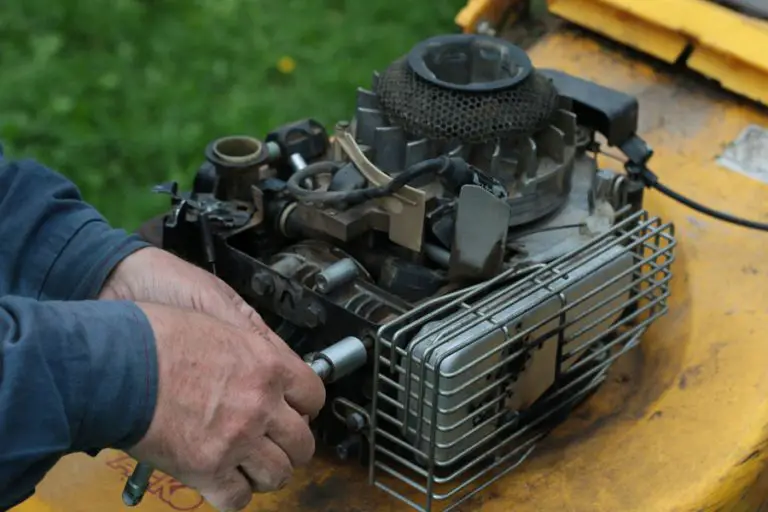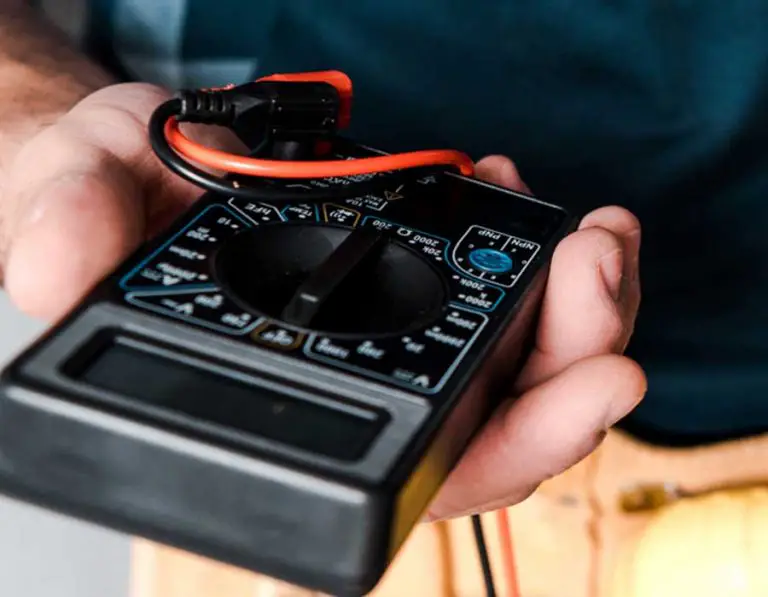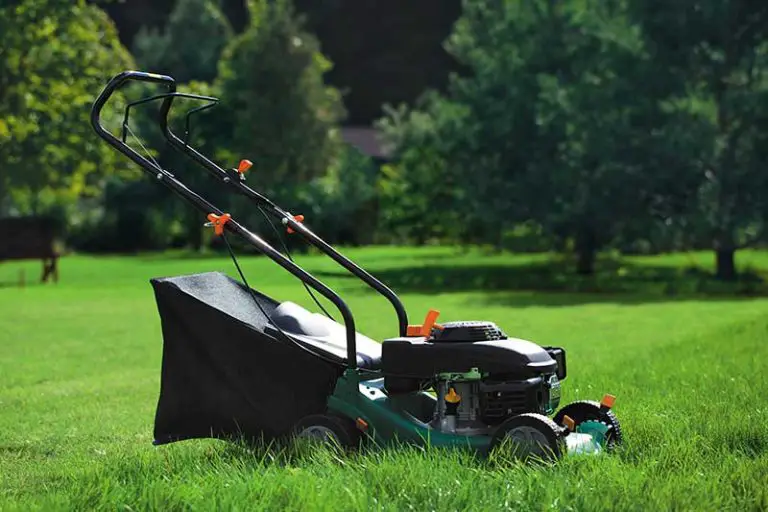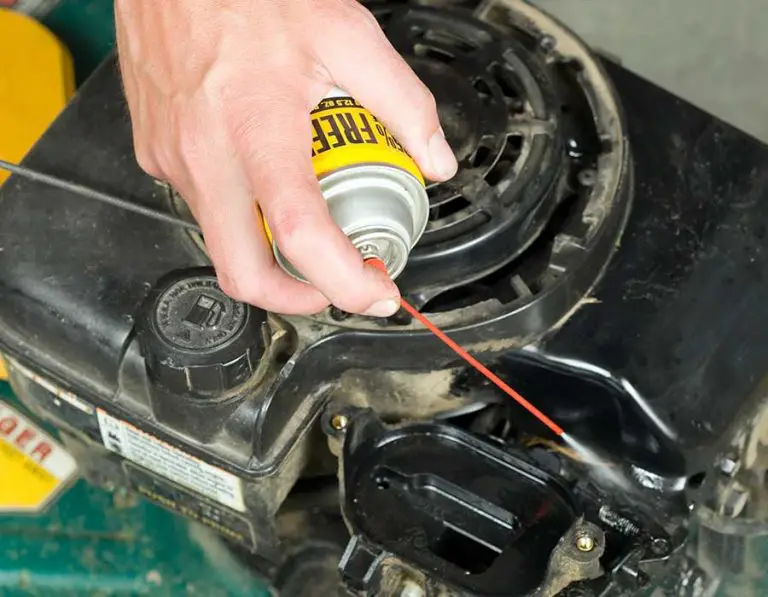Can You Mow Wet Grass?
Whether you’re in the middle of a rainy season, or you just live in an area that naturally sees a lot of rainfall throughout the year, it can be difficult to know how to best fit your mowing schedule around the unfavourable weather conditions.
While it isn’t ideal, it is possible for you to mow wet grass. With that said, mowing wet grass should be avoided and only be done under circumstances where it’s absolutely necessary.
Read on to learn more about the risk factors associated with mowing wet grass. We’ve also included some tips and a how-to guide on the best way to mow wet grass if it’s absolutely necessary.
Why is it Bad to Mow Wet Grass?
It’s More Difficult to Mow Wet Grass
When grass gets wet, the blades become slick and difficult to slice through. Mowing wet grass causes the grass blades to shred unevenly, unlike the clean, straight cut you can achieve on a drier day. Your lawn mower blades would need to be in peak condition, either brand new or newly sharpened, to stand any chance at cutting wet grass blades. Even then, it may take two or three passes to cut the wet grass.
Extra Clean-Up Work is Needed After Mowing Wet Grass
Mowing wet grass generates a lot more work than is necessary compared to when the grass is dry. The wet grass clippings leftover after mowing are particularly clingy, and will end up stuck all over your lawn mower. If damp clippings are left stuck to the undercarriage of the machine for too long, the moisture provides a perfect environment for mold to grow. This will cause the mower to eventually break down. After mowing wet grass, remember to scrape the deck, wipe down the body, and brush off the tyres to get rid of any residual clippings.
In addition to gunking up your lawn mower, wet grass blades are more likely to stain your clothes, shoes, and anything else that comes into contact with them. This is due to the chlorophyll in the grass, which is more prone to causing stains when wet.
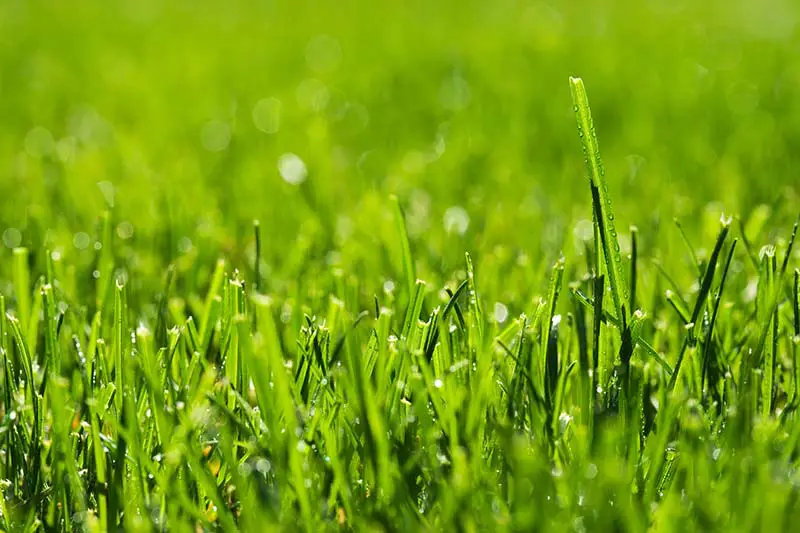
Wet Grass Clippings Can Damage Lawn Mower
Wet grass clippings can cause damage to your lawn mower in a number of ways, which may result in your mower dying or failing to start at all; while they are designed to be somewhat weather resistant, lawn mowers can only get wet to an extent. If you haven’t added a fuel stabilizer, excessive moisture from damp clippings can contaminate leftover fuel in the mower’s tank. This may end up corroding the workings of the machine.
Wet clippings can also get stuck to the lawn mower’s vacuum or blades in clumps, blocking these essential parts. The interference from the blockages forces the mower to work harder than it normally has to, wearing it out and potentially causing it to shut off. If your lawn mower engine won’t start after cutting wet grass, look for any obvious blockage-causing clumps of grass.
Danger of Slipping While Mowing Wet Grass
Wet grass creates a slippery and hazardous surface to walk on. The risk level of this is increased tenfold when you bring a piece of machinery like a lawn mower into the equation. Walking on the slick grass while trying to exert enough force to push the lawn mower in front of you may cause you to slip and fall over, injuring yourself on the lawn and potentially doing even worse damage by falling into the path of the mower’s blades. The risk is even higher if your mowing routine requires you to mow on sloped areas of your lawn.
Danger of Mixing Water With Electricity
The water on the grass mixing with the electricity of the lawn mower is a serious danger of mowing a wet lawn. When mowing wet grass, you run the risk of giving yourself a nasty electric shock, especially if the lawn mower is plugged into an extension cord. This can happen if the connections or any of the wiring under worn-out portions of the mower’s cord come into contact with moisture from wet grass clippings, which can lead to a damaged mower and an electric shock to the person mowing.
Mowing Wet Grass Creates an Uneven Lawn
It’s far more challenging to mow wet grass in an even, uniform fashion, causing it to look uneven and aesthetically unpleasing when the grass dries out again. When grass is covered in moisture and dew, the blades tend to bend and lie closer to the ground. This is due to the weight of the water making the blades too heavy and forcing them downwards, as opposed to dry grass which tends to sit upright.
Having the blades weighed down like this prevents you from being able to properly cut the grass, as the lawn mower’s blades are unable to reach them and cut them all at an equal height. The unevenly cut wet grass will become noticeable once the grass has dried out again, as whole sections will pop back up and appear as if you hadn’t tried to mow them at all.
Mowing Wet Grass May Damage Soil in Lawn
In addition to damaging the actual grass blades, running a lawn mower over a wet lawn can also take quite a toll on the soil beneath it. Lawn mowers are heavy pieces of machinery and therefore shouldn’t be used when the ground is soft and saturated with water. The weight of the mower pressing down through its wheels, combined with the weight of your body as you walk along the lawn pushing the machine, can cause areas of compacted soil. This results in the formation of ruts and irregularities in the lawn’s surface, which may then require you to grade and level your yard down the line. You should make a habit of checking your lawn’s soil before you mow and hold off on mowing if it at all feels soft or looks muddy.
Wet Grass May Spread Lawn Disease or Fungus
When mowing wet grass, the lawn mower has a hard time with reaching and getting a clean cut on the grass blades, and instead has more of a ‘tearing’ effect on the few blades that it manages to make contact with. These tears leave the grass plants open to being infiltrated by fungus, and the moist conditions provide the ideal environment for the fungus to spread. This makes cutting wet grass a gateway to having serious issues with fungal infestations.
The risk of fungal disease spreading throughout your lawn is increased if the grass is cut straight after a rainstorm. If clumps of wet, matted grass clippings are left to sit in the lawn and don’t have the sufficient amount of air or sunlight needed to dry them out quickly, it can lead to a fungal infestation like Brown Patch Lawn Disease or Dollar Spot Fungus.
Tips for Mowing Wet Grass During Rainy Seasons
Mow Ahead of Time According to Weather Forecast
It’s an obvious tip to suggest, but you should keep a close eye on the weather forecast for your area during rainy seasons and use this information to plan out your mowing schedule. Mow the grass as much as you can while it’s still dry; when an extended period of rain is forecast for your area, lower the mower’s blades down a notch or two on the last cut before the rainy weather sets in, and cut the grass slightly lower than usual. This will buy you a bit of time until the rainy period is over and you can mow the grass again. If possible, try to plan your mowing sessions at the best times to mow your lawn; these times are in the mid-morning or late afternoon.
Let Saturated Areas Dry Before Mowing Wet Grass
After a period of rainfall, make sure every part of your lawn has had a chance to dry out before mowing. Some spots in the lawn are going to drain faster than others depending on the landscape, and the different areas of the lawn will likely see varying amounts of sunlight, both of these factors having an effect on how quickly the soil dries out. Excess water in the soil is an issue as it pushes out oxygen. If some areas of soil in your lawn are still saturated with water, the grass plants won’t have access to enough oxygen to continue growing after being mowed. You also risk creating dips and areas of compaction in the lawn by walking over patches of saturated soil with your heavy lawn mower.
Always Use Sharp Mower Blades
When your grass is dry enough to mow, it’s essential to use as sharp a blade as possible in your lawn mower. As we’ve discussed, dull mower blades have more of a tearing or shredding effect on the grass blades, which leaves the grass plants susceptible to disease. Make sure your blades are new or have been recently sharpened to have the best chances of getting a clean, crisp cut on the grass.
Remember One-Third Rule
If you’re unable to mow the lawn for a while and the grass has grown too tall, remember to adjust the height of the mower’s blades before you do the first couple of mows after a long rainy period. This is necessary because if the blades are too low and you accidentally cut too much of the grass blade off in one go, it can stress the grass plant and cause it to turn yellow. For the very first mow, raise the blades up a notch or two and make sure to only cut off one-third of the grass blades’ height. After a few days, adjust the blades down a notch lower, then mow for the third time a few days later using your original setting. Your grass will be fine as long as you don’t cut off more than a third of the blade each time.
Remove Heavy Clippings After Mowing Wet Grass
You should bag any heavy grass clippings left behind after cutting an overgrown lawn for the first time in a while during a rainy season. Leaving grass clippings in your lawn after mowing is a fertilization method known as ‘mulch mowing’, but the grass clippings need to be chopped up and applied as a fine layer for this to have any benefits for your lawn. The leftover clippings produced by mowing an overgrown lawn are too heavy, and if left behind in the lawn, they can smother the wet grass underneath and cause patches of grass to turn yellow. You can either bag the clippings as you mow using a bagging mower, or you can remove them after mowing with a rake.
How to Mow Wet Grass
Despite all of the arguments against mowing wet grass, sometimes it just has to be done. If your area has been going through an extended rainy period and you only have a short window between rainfalls, and if your lawn has become quite overgrown, you may need to attempt to mow the grass while it’s still damp.
You should never attempt to mow the lawn while it’s actually raining. Aside from the potential damage the rainwater could do to your mower’s engine, the wet and slippery conditions are hazardous to your safety. It’s best to wait until the rain has completely stopped and is expected to hold off for a while before attempting to mow.
Step 1: Spray Mower With Silicone Lubricant
Spray the underside of the lawn mower with a silicone lubricant like the Multi-Use WD-40 Spray. This spray stops the damp grass clippings from getting stuck to your mower, and can also ease the amount of work it takes to clean up after the mow.
Step 2: Sharpen or Replace Mower Blades
Either sharpen your lawn mower’s current blades, or replace the current blades. Having as sharp blades as possible in your mower increases the likelihood that you’ll get a clean, even cut, reducing the chance of damaging the grass or causing a fungal infestation to spread. Make it part of your routine to check the blades of your mower each time you mow, making sure that they are level and straight and that there aren’t any scratches or other major defects on them. Any obvious faults indicate that it’s probably time to replace the mower blades completely.
Step 3: Limit Fuel in Tank and Add a Fuel Stabilizer
Only put as much fuel as you’re going to need for one mowing job in the mower’s fuel tank, and add in a liquid fuel stabilizer at a ratio of 1 part stabilizer to 2 parts fuel – that’s 1 oz. of stabilizer per 2 oz. of fuel. Mowing the lawn in damp or wet conditions can cause damage to the lawn mower if excess fuel in the fuel tank becomes mixed with external moisture. Only putting as much fuel as you need at a time then adding a stabilizer helps to reduce the chance of this happening.
Step 4: Check Mower’s Air Filter
Find the air filter cover on the top of the mower, remove it and inspect it. If it feels damp or looks dirty, it may need to be replaced before the lawn mower is used to mow wet grass. Mower air filters can be bought from most hardware stores; all you need to do is remove the old filter and replace it with the new one before reinstating the air filter cover.
Step 5: Raise Mower’s Blades
Adjust the deck on your lawn mower and raise the mower blades so they’ll cut at a height of between 3 to 4 inches. Raising the deck helps to prevent wet grass from clogging up the mower’s undercarriage which is a tendency to happen if the mower’s blades are too low.
Step 6: Mow First Row Slowly
Start the lawn mower’s engine, and begin to walk it slowly along the first row of your lawn. You should be mowing at a slower speed than you usually would, pushing the mower and walking at about 50% less speed than normal. This is because the mower’s blades have to work twice as hard to cut through the wet grass. The alternative way to mow wet grass would be to go over the same areas with the mower several times at a normal speed, but this method would probably consume much more of your time and energy than it would to just do one slower mow.
Step 7: Mow Next Rows in Half-Row Intervals
After mowing the first row of grass, move the equivalent of a half-row away so that the next row the mower runs over is made up of half-cut and half-uncut grass. In doing this, you help the mower to cut the grass more effectively as the blades only need to cut half the volume of grass as they would for a full row.
Step 8: Mow From the Edges Working Inwards
Run the mower along the edges of the lawn’s perimeter and continue to mow in half-row intervals working inwards as you move around the lawn.
Step 9: Mow in Horizontal and Vertical Rows
Run the mower in multiple directions, i.e. in both horizontal and vertical lines, across the lawn. It’s difficult to mow wet grass as the blades get weighed down with moisture, causing them to lay flat on the lawn which makes it a challenge to get a good cut from straight strokes. Alternating your path so that you’re running the mower in horizontal and vertical lines should help you to get as best a cut as possible.
Step 10: Bag or Remove Wet Grass Clippings
Bag the wet grass clippings as you mow, or remove them once you’ve finished mowing. Leaving behind clumps of wet grass can smother the grass underneath and cause it to turn yellow, so it’s important that leftover clippings aren’t left to sit on the lawn. The clippings can be bagged on-the-go with the use of a bagging mower, but if you don’t have this piece of equipment, use the side discharge on your mower to expel the clippings, and rake them up and remove them afterwards.

